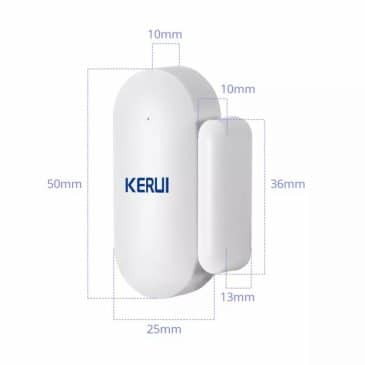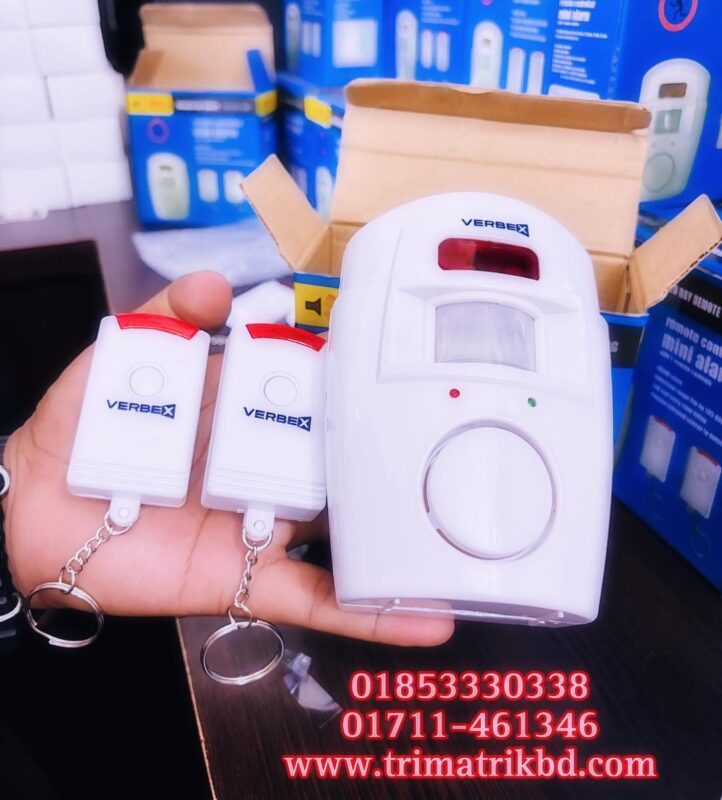Showing all 9 resultsSorted by latest
Motion Sensor Price in Bangladesh 2025
Motion Sensor Price in Bangladesh is starts from 1500 taka. KERUI P819 433MHz Wireless Intelligent PIR Motion Sensor Alarm Detector ৳ 3,500.00. KERUI HW10 Wireless PIR Sensor Alarm Movement Detection For WIFI GSM Alarm ৳ 2,000.00. KERUI W210 Tuya Smart Alarm System WIFI GSM Home Security Alarm Kit ৳ 15,000.00. Kerui GS-G1 Touch Screen 4G Wifi Gsm GPRS Burglar Alarm System ৳ 30,000.00. KERUI W214 4G Alarm System Wireless Burglar Smart Home Security System ৳ 22,500.00.
Motion Sensor Detector price in Bangladesh
Motion Sensor Detector price in Bangladesh is starts from 1500 taka. Wireless Intelligent PIR Motion Sensor Alarm Detector price is ৳ 3,500.00. Wireless PIR Sensor Alarm Movement Detection For WIFI GSM Alarm price is ৳ 2,000.00. Tuya Smart Alarm System WIFI GSM Home Security Alarm Kit price is ৳ 15,000.00. Verbex GS-G1 Touch Screen 4G Wifi Gsm Burglar Alarm System price is ৳ 30,000.00. Verbex W214 4G Alarm System Wireless Burglar Smart Home Security System price is ৳ 22,500.00.






PIR Motion Sensor
An Automatic PIR (Passive Infrared) Motion Sensor Detector is a device that detects movement within a specific area by sensing changes in infrared radiation. PIR sensors are commonly used in security systems, lighting controls, and other automation applications. A Pyroelectric Infrared (PIR) Sensor for Human Body Detection is a specific type of PIR sensor designed to detect the presence and movement of people. These sensors are commonly used in security systems, automatic lighting, and other motion-based detection systems. Here’s how they work and what makes them ideal for detecting human motion:
Key Features of PIR Motion Sensors:
- Sensing Mechanism: PIR sensors detect infrared radiation emitted by objects in their field of view, primarily from human bodies due to body heat. When someone enters the sensor’s range, the PIR detects the change in infrared levels and triggers an action.
- Dual Pyroelectric Elements: Most PIR sensors use two pyroelectric sensors to differentiate between general infrared background noise and actual motion. These sensors detect changes in infrared energy, such as when a warm object (like a person) moves across their detection zone.
- Applications:
- Security: Used in alarms and cameras to detect intruders.
- Automatic Lighting: Turns lights on when motion is detected and turns them off after a period of inactivity.
- Home Automation: Integrated into smart home systems to trigger various actions based on movement.
- Detection Range: The detection area typically covers a specific angle (e.g., 90° to 180°) and can detect motion from a certain distance, often between 5 to 20 meters, depending on the sensor’s specifications.
- Sensitivity Adjustment: Many PIR sensors allow users to adjust the sensitivity to prevent false triggers, such as movements from pets or small objects.
- Timers and Delay: Some sensors come with a built-in delay feature, so the connected system (e.g., light or alarm) stays on for a predetermined time after motion is detected, ranging from seconds to minutes.
Working Principle of Pyroelectric Infrared PIR Sensors:
- Pyroelectric Effect: Pyroelectric materials generate a temporary voltage when they experience a change in temperature. In the case of PIR sensors, these materials detect infrared radiation, which is emitted as heat by objects like the human body.
- Infrared Detection: Human bodies emit infrared radiation in the 8-14 micrometer range. The sensor detects changes in this infrared radiation when a person moves across its field of view.
- Dual or Multiple Elements:
- PIR sensors typically have two or more pyroelectric elements. When a human (or another heat-emitting object) moves within the sensor’s range, the infrared radiation across these elements changes, generating a signal.
- This design helps differentiate between constant heat sources (like a heater or sunlight) and actual motion. The sensor is triggered only by changes in infrared radiation, such as when a person enters or moves across its detection zone.
Key Features:
- Motion Detection: Detects human motion by sensing changes in infrared radiation. Typically, the sensor will not detect stationary objects or slow changes in temperature.
- Detection Range: These sensors can detect motion within a range of around 5 to 20 meters, with a detection angle varying from 90° to 180°.
- Low Power Consumption: PIR sensors are energy-efficient, making them suitable for battery-operated devices like wireless security systems or motion-activated lights.
- Output Signal: When motion is detected, the sensor sends an electrical signal (usually a high or low output) to trigger connected devices (e.g., lights, alarms, or cameras).
- Applications:
- Security Systems: Detects human presence and triggers alarms or cameras in intrusion detection systems.
- Lighting Systems: Used in automatic lights that turn on when someone enters the area and turn off after a set time without movement.
- Smart Home Devices: Integrated into home automation systems to control devices based on motion.
- Sensitivity and Delay Adjustment: Many PIR sensors allow users to adjust the sensitivity to reduce false triggers (e.g., from pets) and set delay times for how long the connected system remains active after detection.
Common Uses:
- Human Body Detection: PIR sensors are excellent for detecting human presence in a room, corridor, or open area.
- Home Automation: Used in smart lighting, HVAC systems, and security.
- Occupancy Detection: PIR sensors detect whether a room is occupied, triggering HVAC or lighting systems accordingly.









